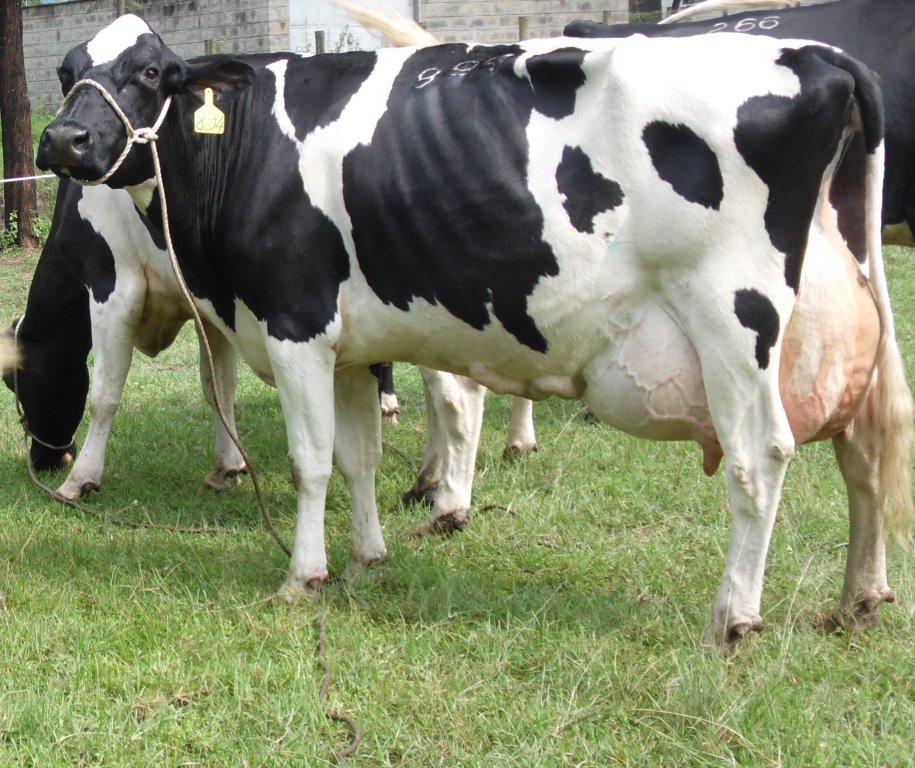Friesian cows at the 2016 Nakuru ASK Show. Kisii County farmer manages his dairy cows from Meru via a mobile phone. Photo by Laban Robert.
Despite being more than 440km from his Kisii County home, James Kereri is successfully running a dairy farming business from his work station in Meru via a mobile telephone.
The Keumbu Sub-County farmer has three Friesians and three local breed cows.
Kereri gives instructions to his worker and follows up on the various daily dairy farm activities via his phone, by relying on his the employee, his mother and animal health officers
“I know the profile of each cow. I keep track of health, feeding and production records from the time to time. The information I get from the caretaker and other sources gives me a picture of the farm right here in Meru,” he said.
Production is one of the key indicators that give him an accurate insight into the health of the cows.
When the yields drop per day from a given cow, the farmer follows up to know if it was feeding that was not done as required. And if the milk yields drop persists from a given cow, Kereri know there is a serious problem that needs attention.
“I have two animal health officers. I call the officers separately and ask them to visit the farm at different times. A comparison of their findings and those of the worker help me in determining the remedy for the drop in milk yield,” he said.
Upon the advice of the two health officers, the farmer gives instructions of what need to be done to the caretaker and waits to see the results.
READ ALSO: One dairy cow lights up farmer's home
READ ALSO: Farmers dictate market prices with mobile phones
READ ALSO: Embryo transfers deliver cheap high-yielding Friesians
In addition to meet their production costs via milk, Kereri says the earnings from the milk sale are helping his mother meet domestic needs while he is away.
The cows are fed on Napier grass, maize stalk remains and commercial feeds. Whilst dairy cows are choosy in feeding, the local breeds clear the remaining ‘waste’.
Lactating cows require at least 16 per cent of crude proteins in their diet. Proteins are important sources of amino acids required in the milk synthesis process.
Kereri includes dagaa fish, commonly called omena, in commercial feed to improve the protein content.
“Sometimes commercial feeds are substandard. Cows need more proteins and other minerals to give quality and quantity milk. Besides salt and other mineral supplements, I ask the caretaker to mix the omena with the feeds,” Kereri, who is an accountant in Meru ,said.
About a quarter of the small fish is mixed with one kilo of the commercial feed s.
The omena is bought from Kisii town, which is about 12km from Keumbu.
With two of the dairy cows being in-calf, the farmer aims at increasing the herd to 20 in the near future before abandoning the local breed.

















Comments powered by CComment